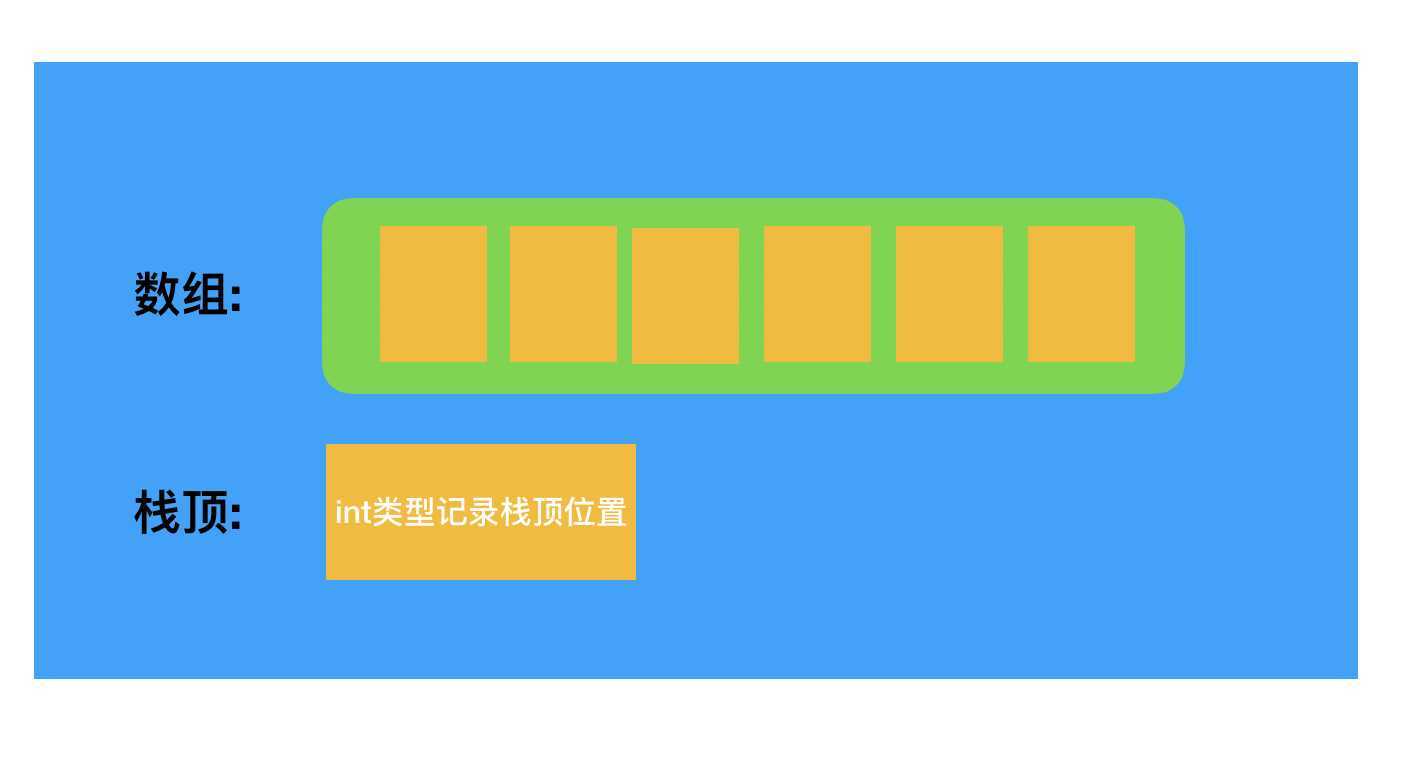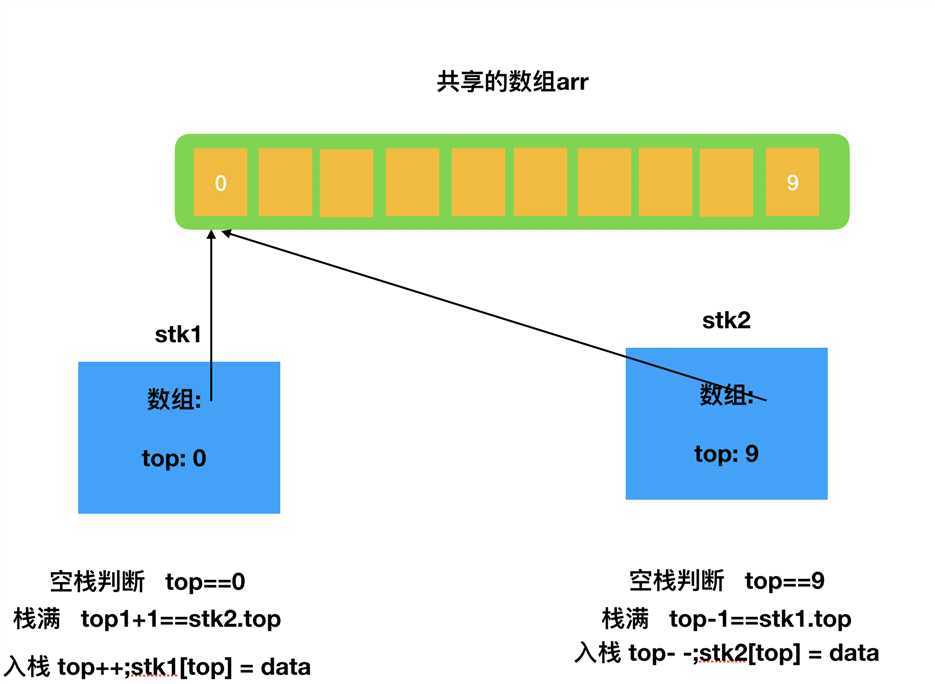栈(Stack),是运算受限的线性表,插入和取出操作都只能在表头进行,也称之为后进先出(LIFO)线性表;
有名为stk的栈,按顺序插入:1,2,3三个元素,插入完成后取出全部,顺序为:3,2,1;
既然是线性表,则可以通过顺序结构和链接结构来实现,通过顺序结构实现的栈称为顺序栈,通过链接结构实现的栈称为链栈;
顺序栈数据结构:

#include <stdio.h>
//栈的顺序实现
//定义数据结构
const int SIZE = 5;
typedef struct{
int data[SIZE];
int top;
}seqStk,*SEQStack;
SEQStack initalStack(){
SEQStack stack = malloc(sizeof(seqStk));
stack->top = -1;
return stack;
}
int isEmpty(SEQStack stack){
if(stack->top == -1){
return 1;
}
return 0;
}
int getTop(SEQStack stack){
if (isEmpty(stack)) {
printf("err:stack is empty!\n");
return NULL;
}else{
return stack->data[stack->top];
}
}
int pop(SEQStack stack){
//先进后出,出栈是判断是否空
if (isEmpty(stack)) {
printf("err:stack is empty!\n");
return NULL;
}else{
int temp = getTop(stack);
stack->top--;
return temp;
}
}
void push(SEQStack stack,int data){
if (stack->top == SIZE-1) {
printf("err:stack already full!\n");
}else{
stack->top++;
stack->data[stack->top] = data;
}
}
int main(int argc, const char * argv[]) {
SEQStack stack = initalStack();
push(stack,100);
push(stack,200);
push(stack,300);
push(stack,400);
push(stack,500);
push(stack,600);
printf("geted:%d\n",pop(stack));
printf("geted:%d\n",getTop(stack));
printf("geted:%d\n",pop(stack));
printf("geted:%d\n",pop(stack));
printf("geted:%d\n",pop(stack));
printf("geted:%d\n",pop(stack));
printf("Hello, World!\n");
return 0;
}
顺序实现的弊端就在于,无法预估数据长度,会造成空间浪费,为了避免这个问题,我们可以让两个栈共享同一个顺序存储空间,起始地址和结束地址分别作为两个栈的栈底;

数据结构:

#include <stdio.h>
//结构定义
typedef struct node{
int data;
struct node *next;
}Node,*LinkStk;
LinkStk initialStack(){
LinkStk stack = malloc(sizeof(Node));
stack->next = NULL;
return stack;
}
int isEmpty(LinkStk stack){
if (stack->next == NULL) {
return 1;
}
return 0;
}
void push(LinkStk stack,int data){
Node *p = malloc(sizeof(Node));
p->next = stack->next;
p->data = data;
stack->next = p;
}
Node *getTop(LinkStk stack){
return stack->next;
}
void *pop(LinkStk stack){
if (isEmpty(stack)) {
printf("error:stack is empty!\n");
return NULL;
}
Node *temp = stack->next;
stack->next = temp->next;
free(temp);
}
int main(int argc, const char * argv[]) {
LinkStk stack = initialStack();
push(stack, 100);
push(stack, 200);
push(stack, 300);
pop(stack);
pop(stack);
pop(stack);
Node *a = getTop(stack);
if (a != NULL){
printf("%d\n",a->data);
}
push(stack, 900);
Node *w = getTop(stack);
printf("%d\n",w->data);
printf("Hello, World!\n");
return 0;
}
案例中所有操作算法时间复杂度均为O(1);
原文:https://www.cnblogs.com/yangyuanhu/p/12745053.html